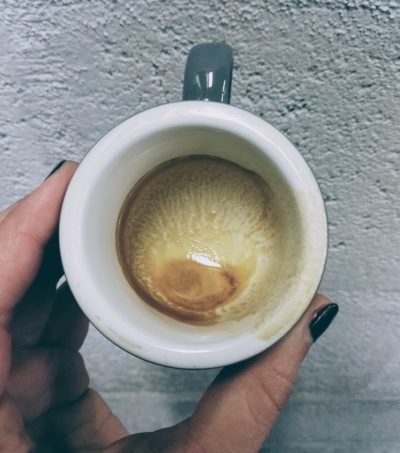…is there really a significant difference between them, or is dividing roasts this way more of a remnant of the past?
I was trying to buy a coffee from a Spanish roaster This morning, I found that distinction again. They have two types of roasts, for espresso and filter, and they don't recommend using filter coffee for espresso. I didn't buy the coffee for other reasons (€10 for shipping a 250g bag, really?), but I got to thinking about it. About espresso/filter roasts, and how one can taste good only in one method, and not be recommended for the other.
I won't tell you anything new, but I will say that only in the last two or three years, due to the development of coffee roasting software, better grinders, and our growing understanding of extraction and solubility, has roasting coffee become something that can be considered a more or less repeatable process. Only now are we getting closer to being able to repeat the same roast profile over and over again. And for the coffee to taste the same. Some kind of quality, in that sense, has appeared, or is only now appearing, in the specialty coffee segment.
Just now, guys.
All that time before, roasting was surrounded by some kind of magic, and was considered a craft, for which you need to have "a feel." All that sorcery with taking out the trier, smelling the coffee beans, checking the color, when it's the right yellow, when it's not yellow enough—all of that has been completely arbitrary, and definitely completely imprecise.
I'm not even talking about the fact that nervously removing the trier means upsetting the reaction taking place in these coffee beans, and eventually making the roast even more inconsistent.
Today you have enough light, and you, with your imperfect human eye, decide this yellow is the right one. Tomorrow you're tired, you didn't sleep well, your eyes tell you something different: you make a different decision. Were the profiles the same? I doubt it.
And espresso and filter roasts existed, and were practiced, long before we had any idea what was going on inside the roasting machine.
So, which roasters were paying attention to was obvious, something that was always available, always at the forefront. Color.
So, in this way, “traditionally,” “espresso roast” is a darker roast, and “filter roast” is a lighter roast. And, of course, each roaster It has its concepts of lighter and darker. Therefore, there is more inconsistency and disorder.
Now that we've entered the era of Cropster and other similar coffee roasting programs, we know more and more objectively. Actually, here's a little secret: roasters don't need to get out the trier and visually "inspect" the coffee. Those photos you see everywhere, guys staring at the beans, pretending to look for something... There's no need for that. It's done because that's how it's been done for years and years, when there were no other ways to assess the state of the roast except using your vision.
So, why did these "espresso" and "filter" roasts appear? They made sense before, but don't anymore.
They serve to mitigate underdevelopment.
The roasts that prevailed throughout that time were "cooked." We didn't have enough knowledge to roast light and still produce a sweet coffee. The light roasts, if they succeeded, lacked sufficient sweetness, with intense and unbalanced acidity.
Imagine something like this in espresso, in the method that basically intensifies everything in the coffee. You'll get a sour liquid with no trace of sweetness whatsoever. But if you roast it a little longer… If you roast it longer, the acidity will no longer be a nuisance; the aromas in the coffee will be represented primarily by those from the dry distillation phase… You'll lose complexity, yes, you'll have a flat, lifeless coffee, yes – but the acidity will no longer be a nuisance.
There was no way, no understanding, no idea that this could actually be done—to balance acidity with sweetness, without turning the coffee into carbon. So, espresso roasting was a way to make coffee drinkable in espresso. And at the time, what they were doing was roasting to mitigate acidity and "hide" the underdevelopment behind burnt and smoky notes.
That was before.
But now we have much more control, and we can actually control the roasting process to achieve the desired levels.
And the question is, if the coffee is well developed, shouldn't it taste good using any method?
What do roasters mean by "espresso roasting" now?
What is it supposed to be?
